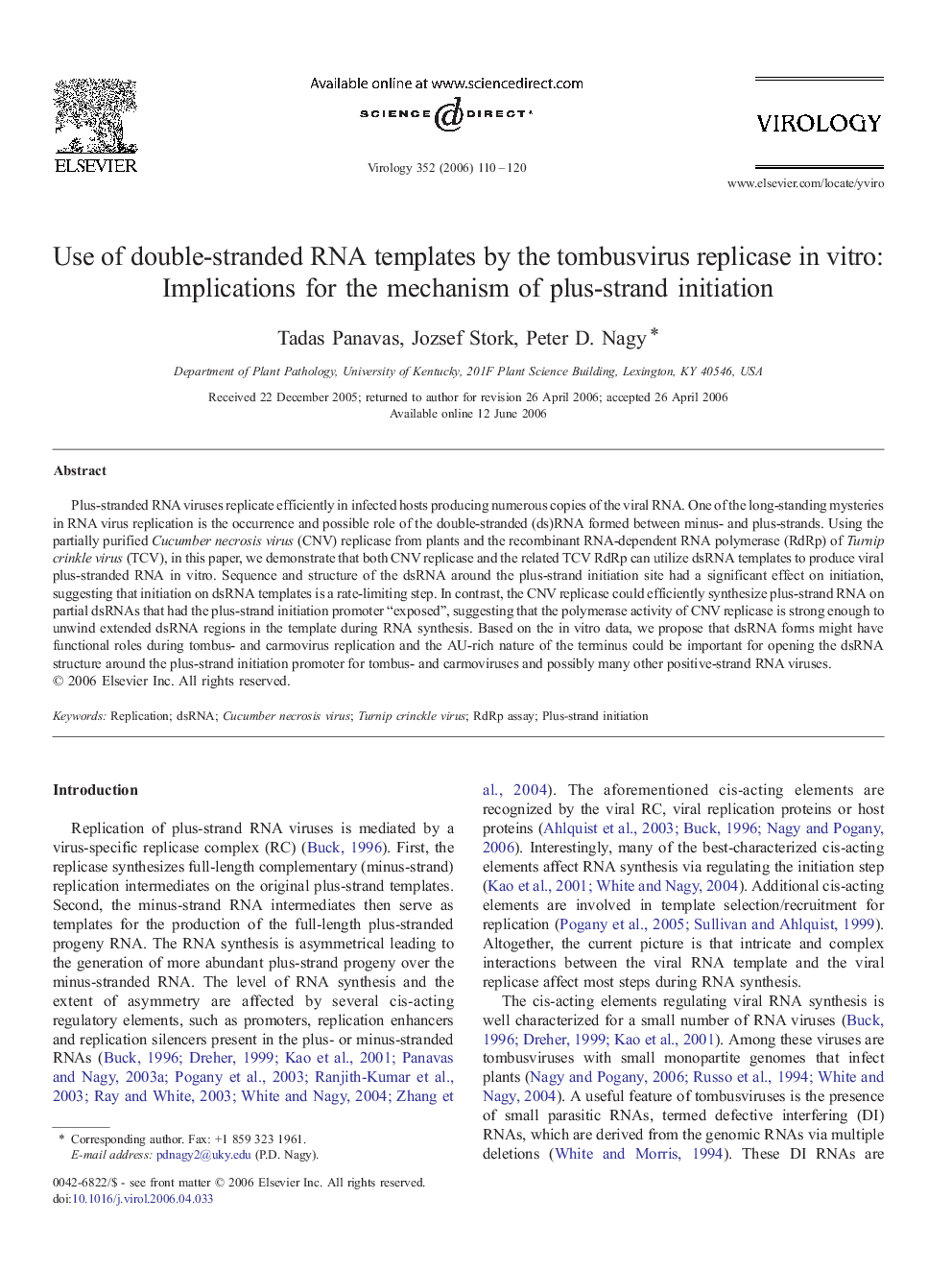| کد مقاله | کد نشریه | سال انتشار | مقاله انگلیسی | نسخه تمام متن |
|---|---|---|---|---|
| 3427229 | 1227376 | 2006 | 11 صفحه PDF | دانلود رایگان |

Plus-stranded RNA viruses replicate efficiently in infected hosts producing numerous copies of the viral RNA. One of the long-standing mysteries in RNA virus replication is the occurrence and possible role of the double-stranded (ds)RNA formed between minus- and plus-strands. Using the partially purified Cucumber necrosis virus (CNV) replicase from plants and the recombinant RNA-dependent RNA polymerase (RdRp) of Turnip crinkle virus (TCV), in this paper, we demonstrate that both CNV replicase and the related TCV RdRp can utilize dsRNA templates to produce viral plus-stranded RNA in vitro. Sequence and structure of the dsRNA around the plus-strand initiation site had a significant effect on initiation, suggesting that initiation on dsRNA templates is a rate-limiting step. In contrast, the CNV replicase could efficiently synthesize plus-strand RNA on partial dsRNAs that had the plus-strand initiation promoter “exposed”, suggesting that the polymerase activity of CNV replicase is strong enough to unwind extended dsRNA regions in the template during RNA synthesis. Based on the in vitro data, we propose that dsRNA forms might have functional roles during tombus- and carmovirus replication and the AU-rich nature of the terminus could be important for opening the dsRNA structure around the plus-strand initiation promoter for tombus- and carmoviruses and possibly many other positive-strand RNA viruses.
Journal: Virology - Volume 352, Issue 1, 15 August 2006, Pages 110–120